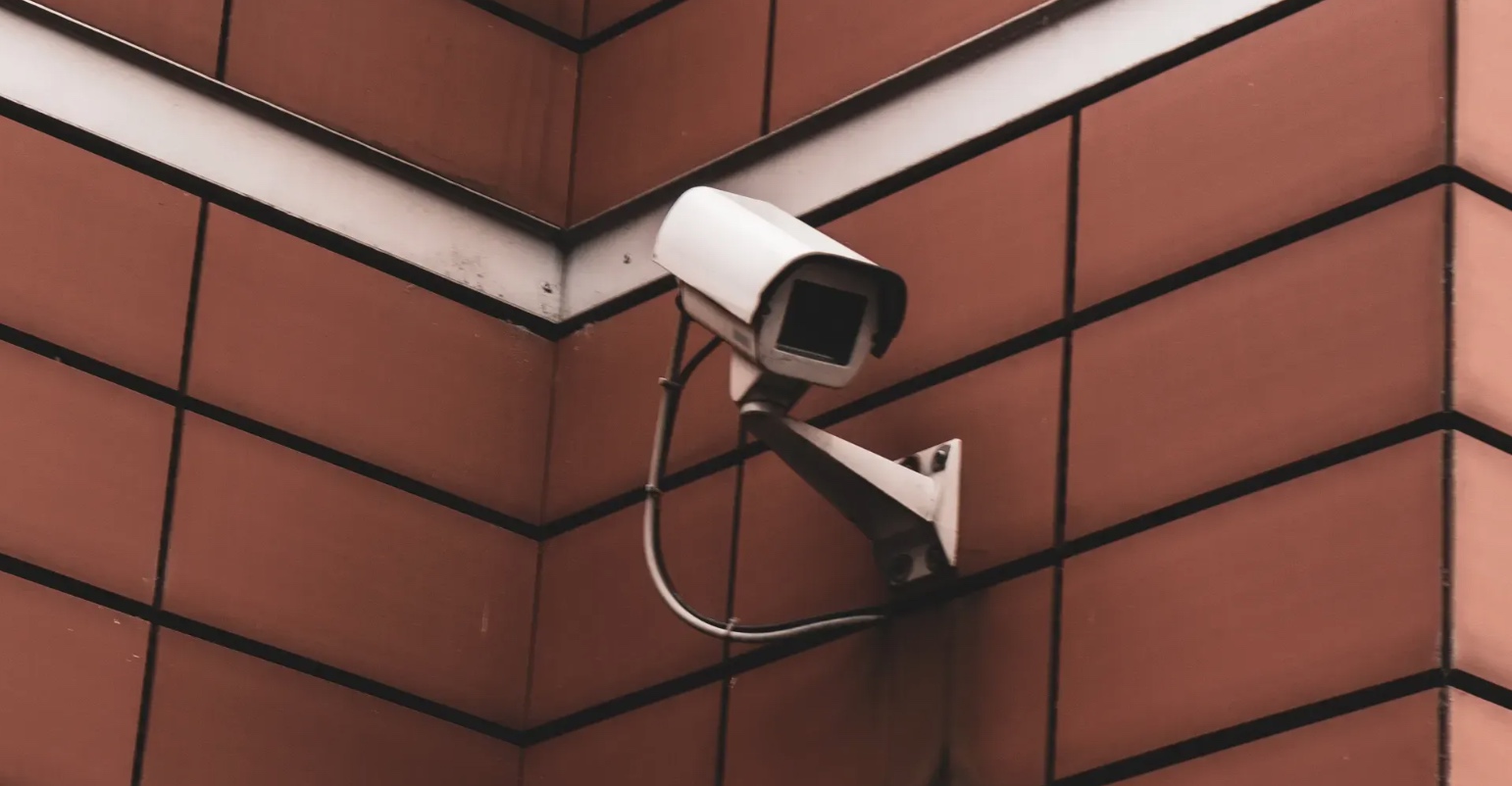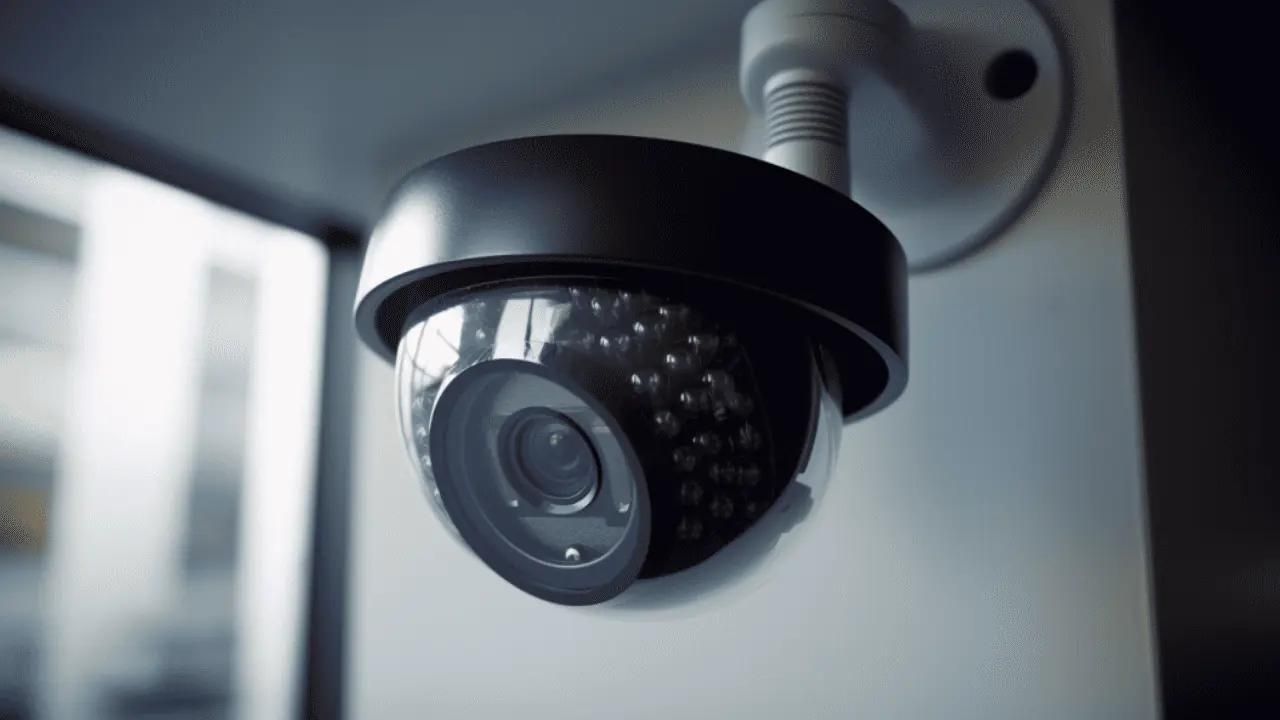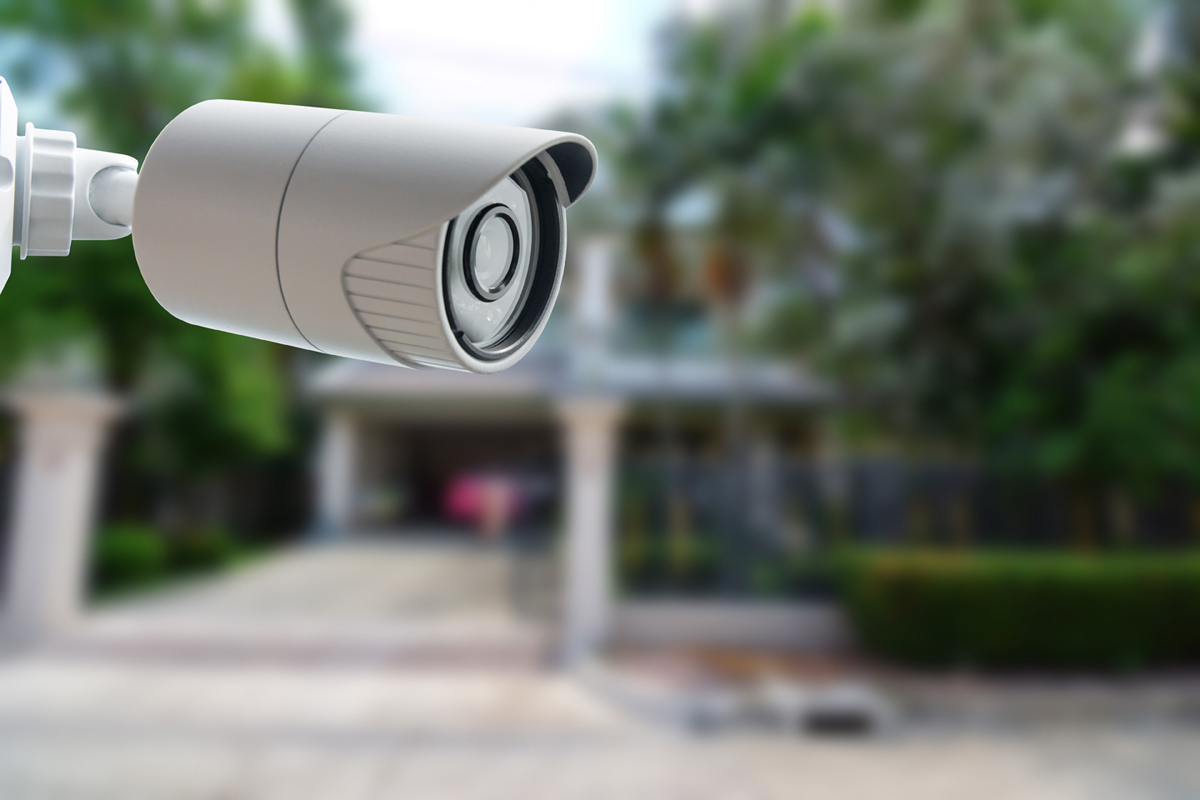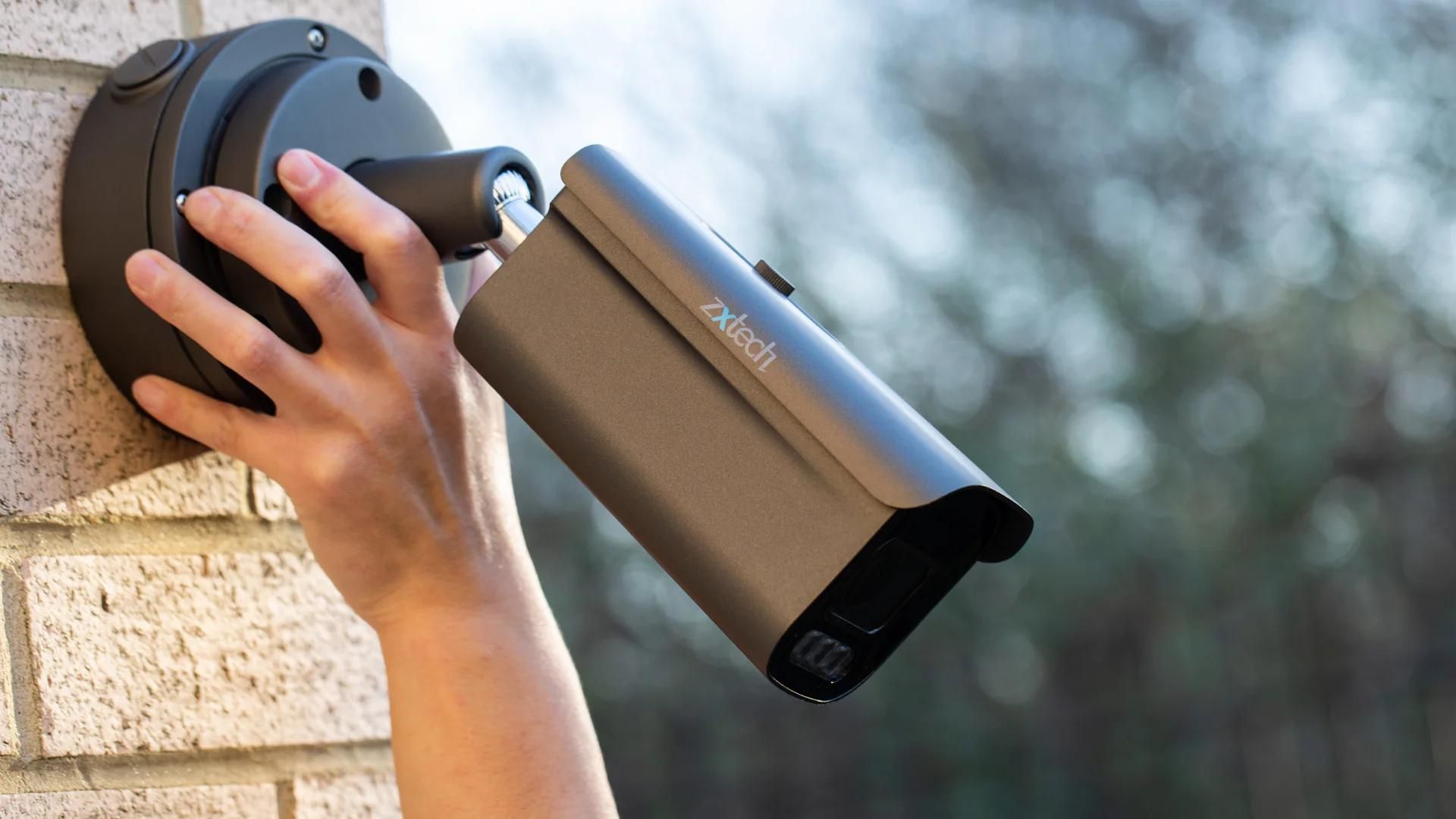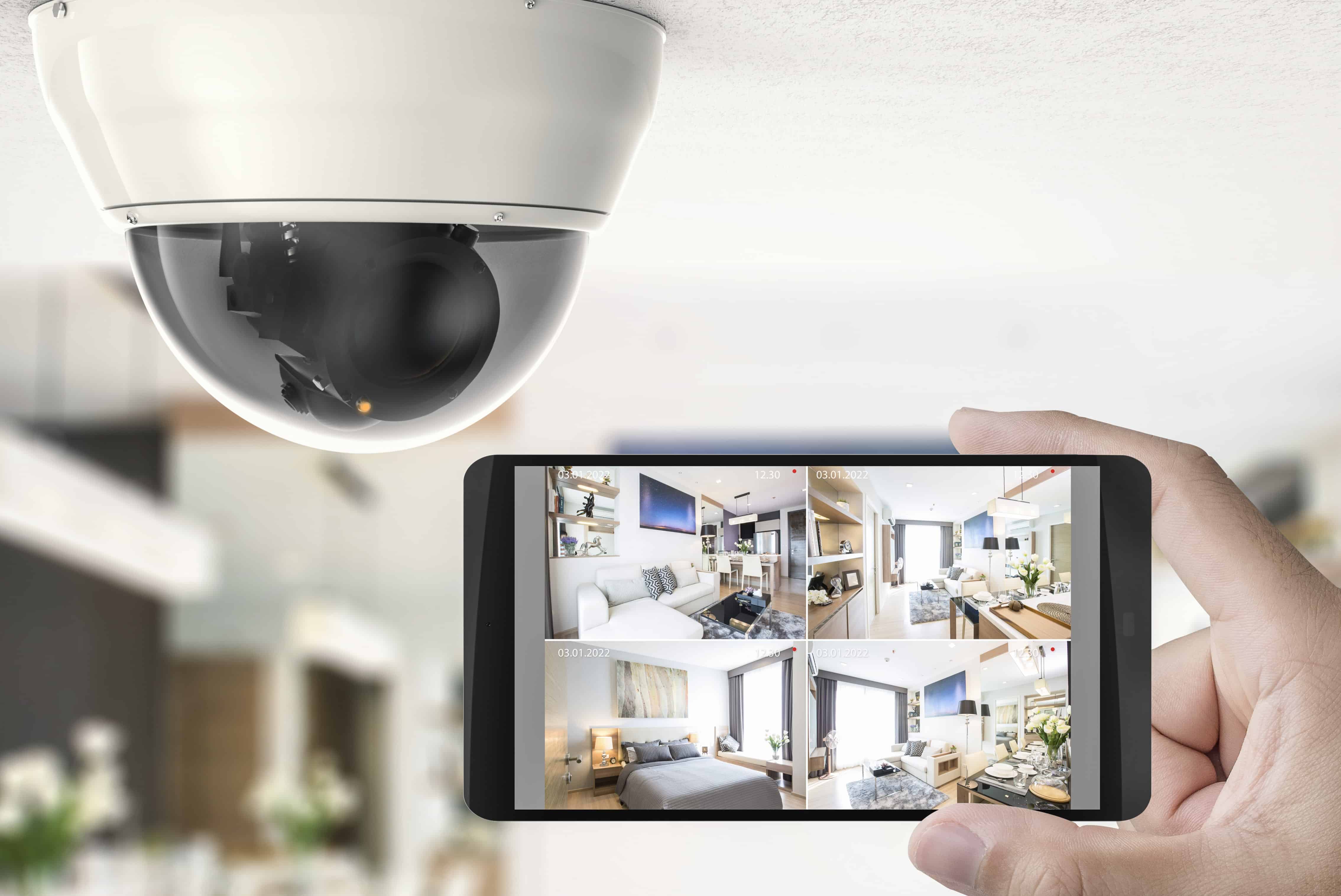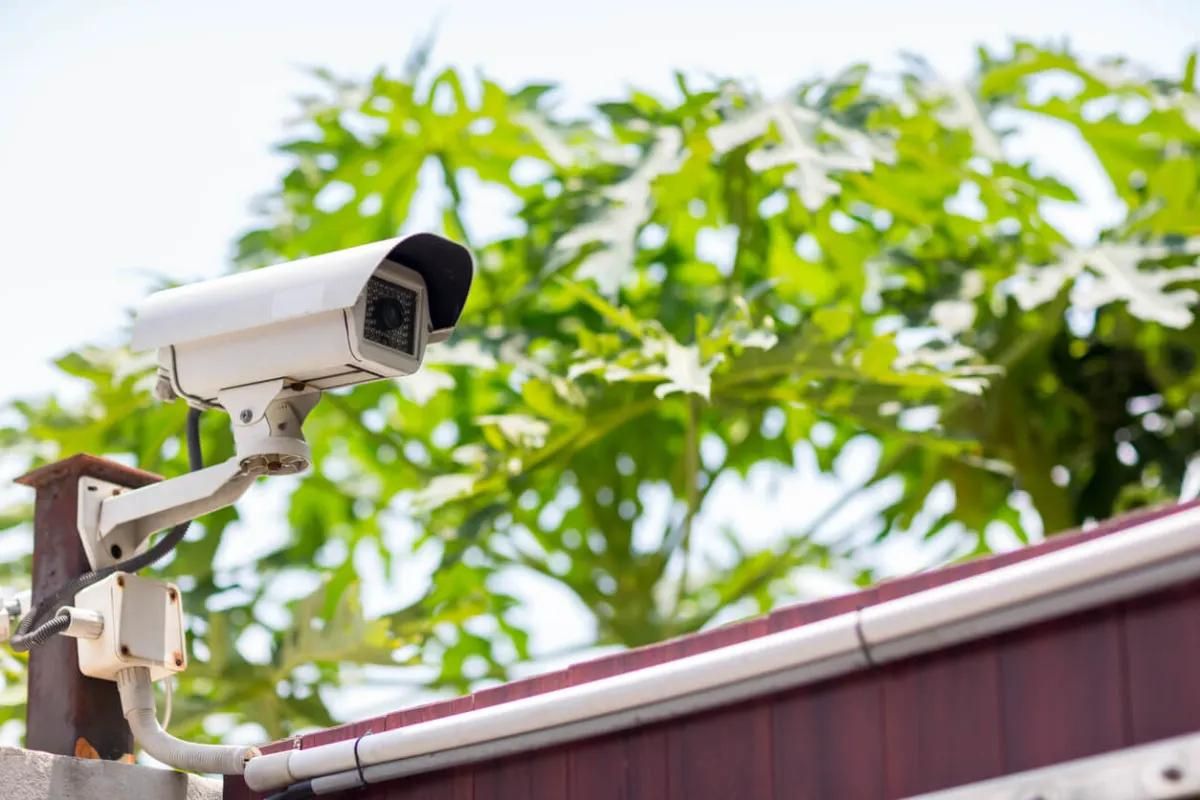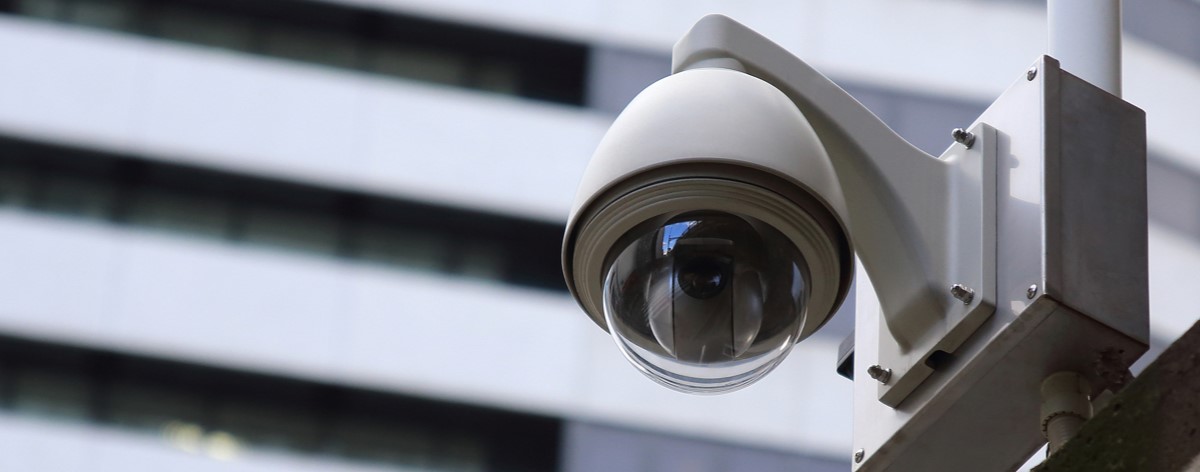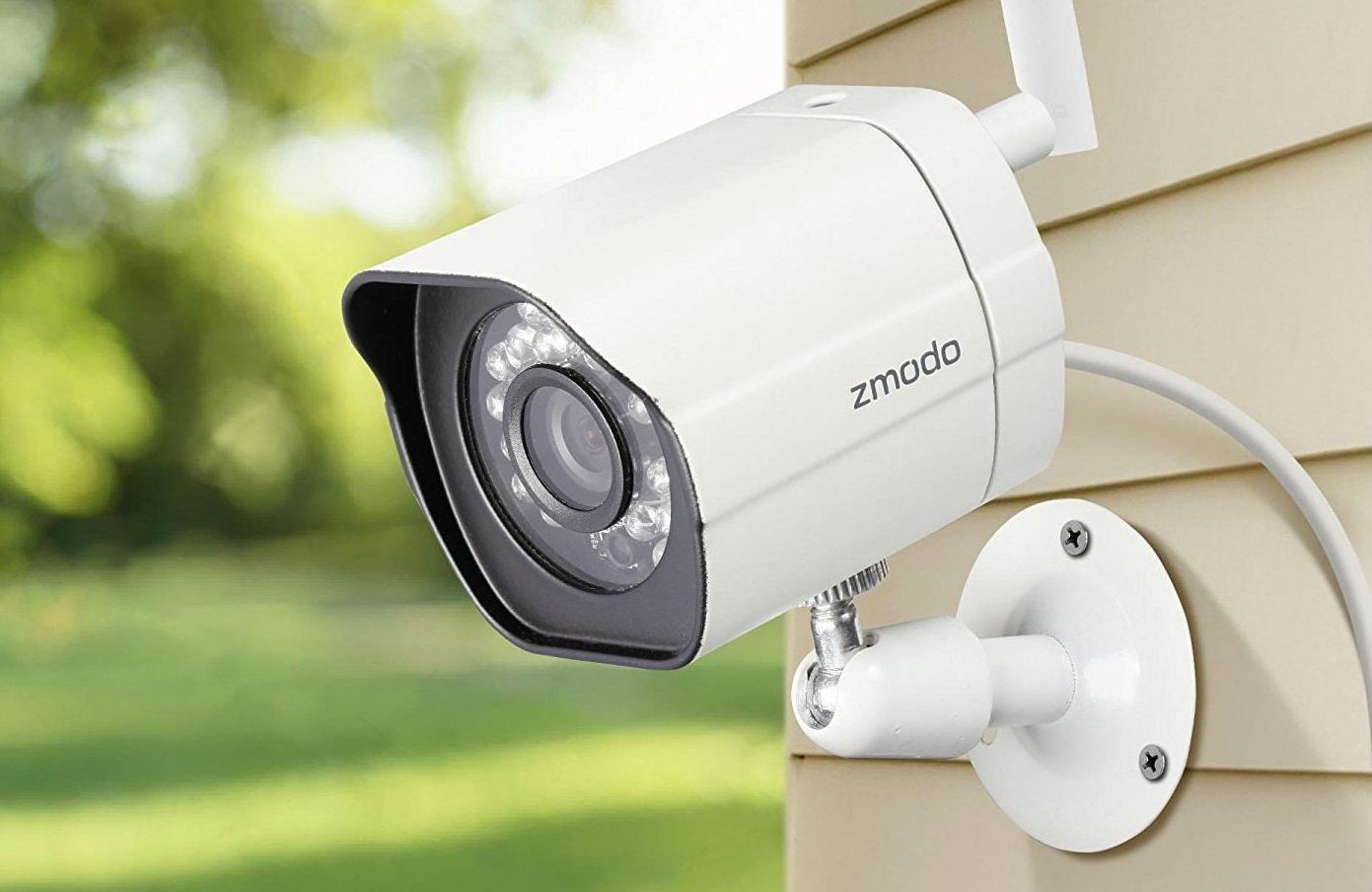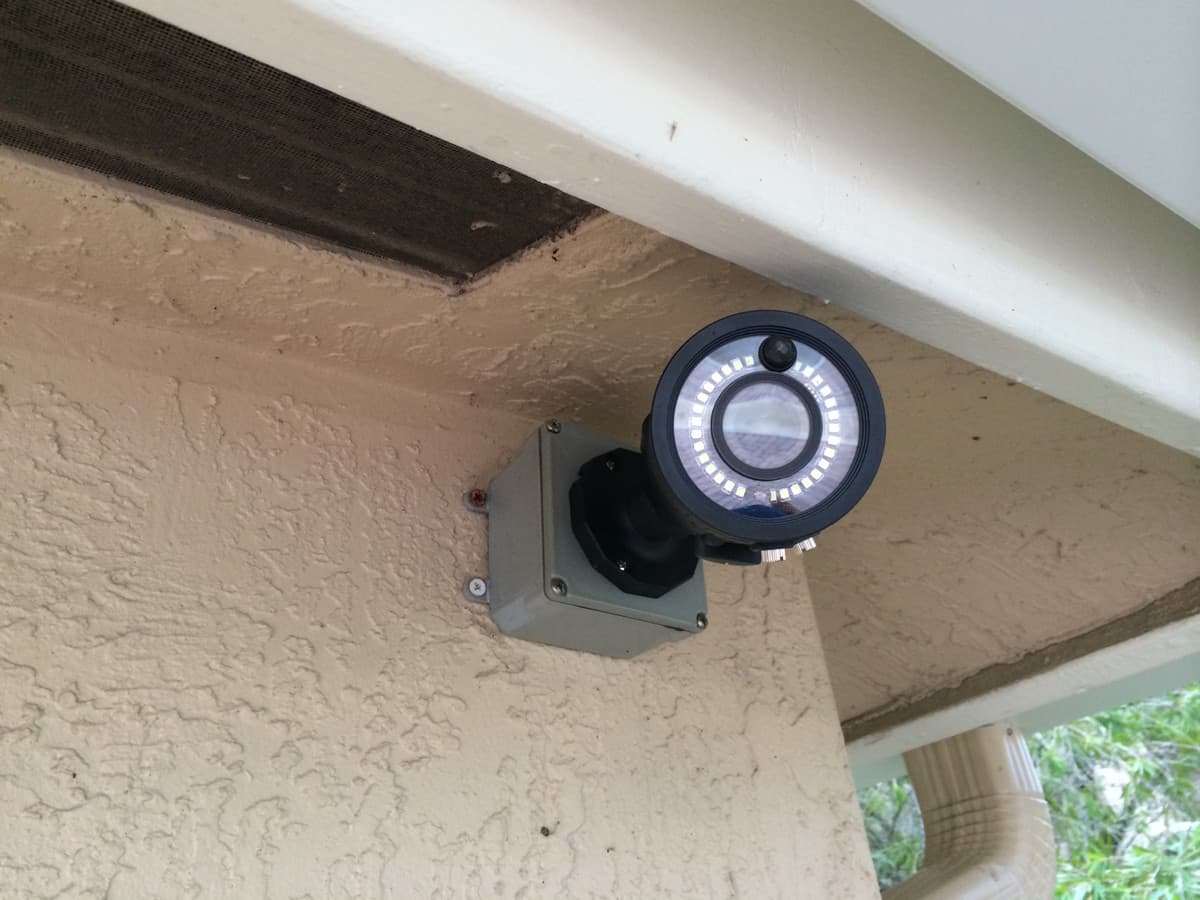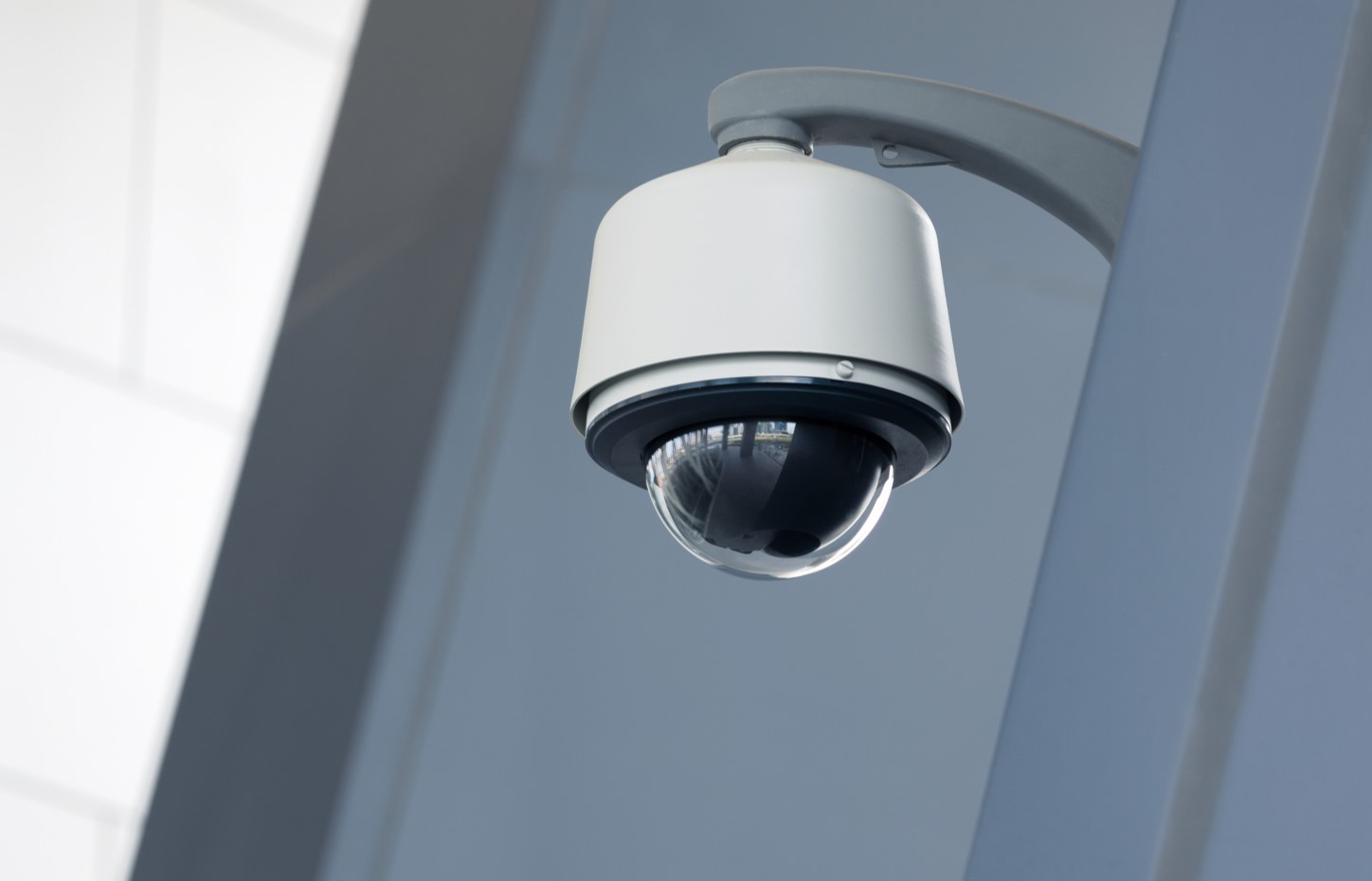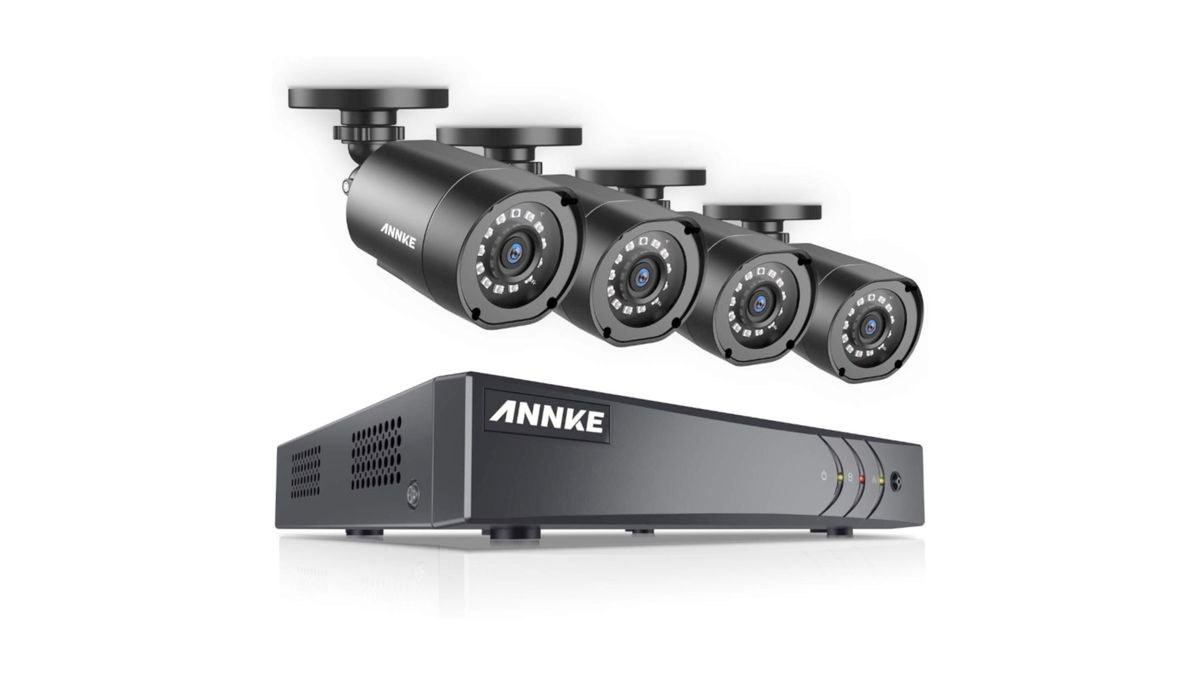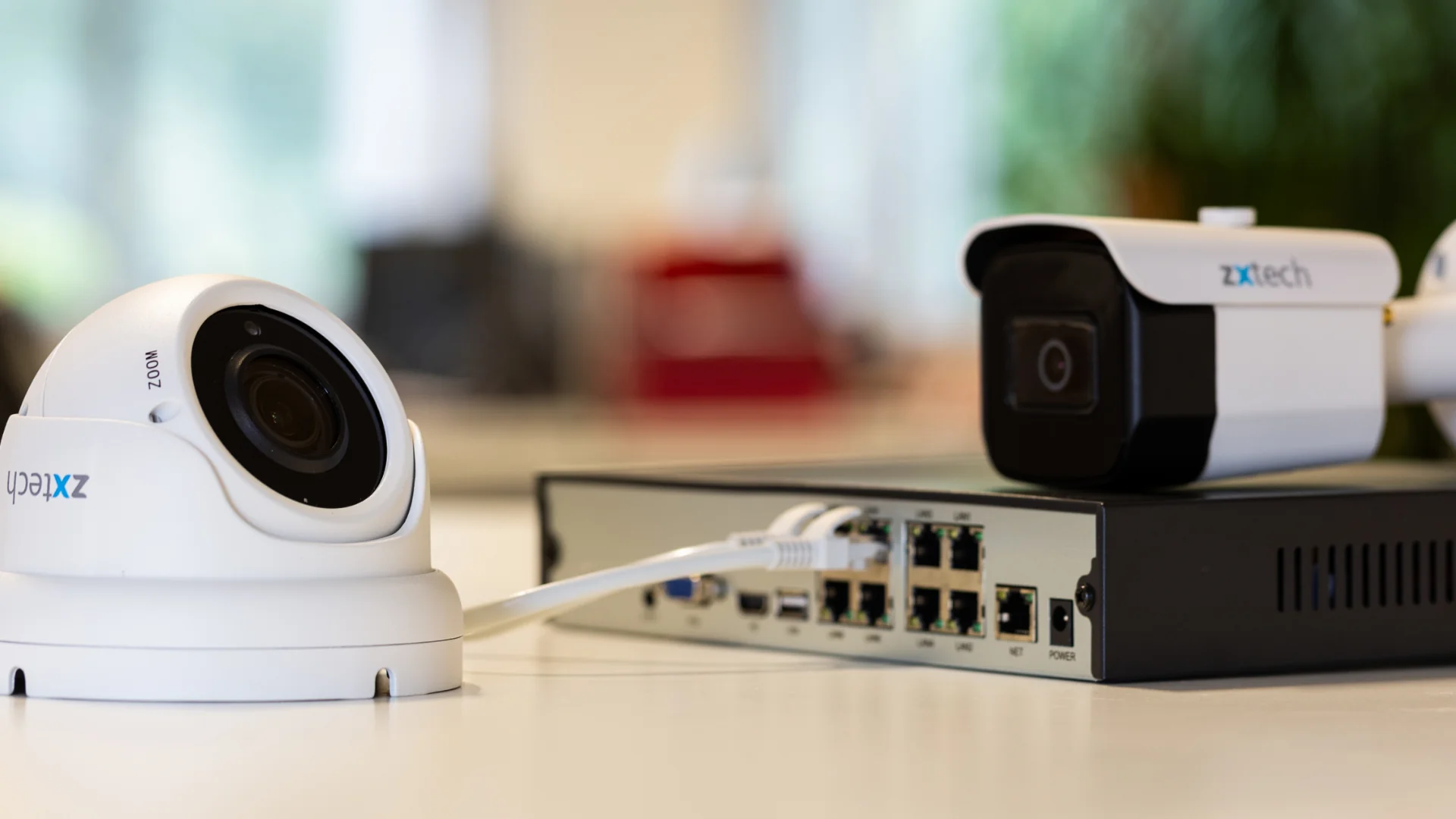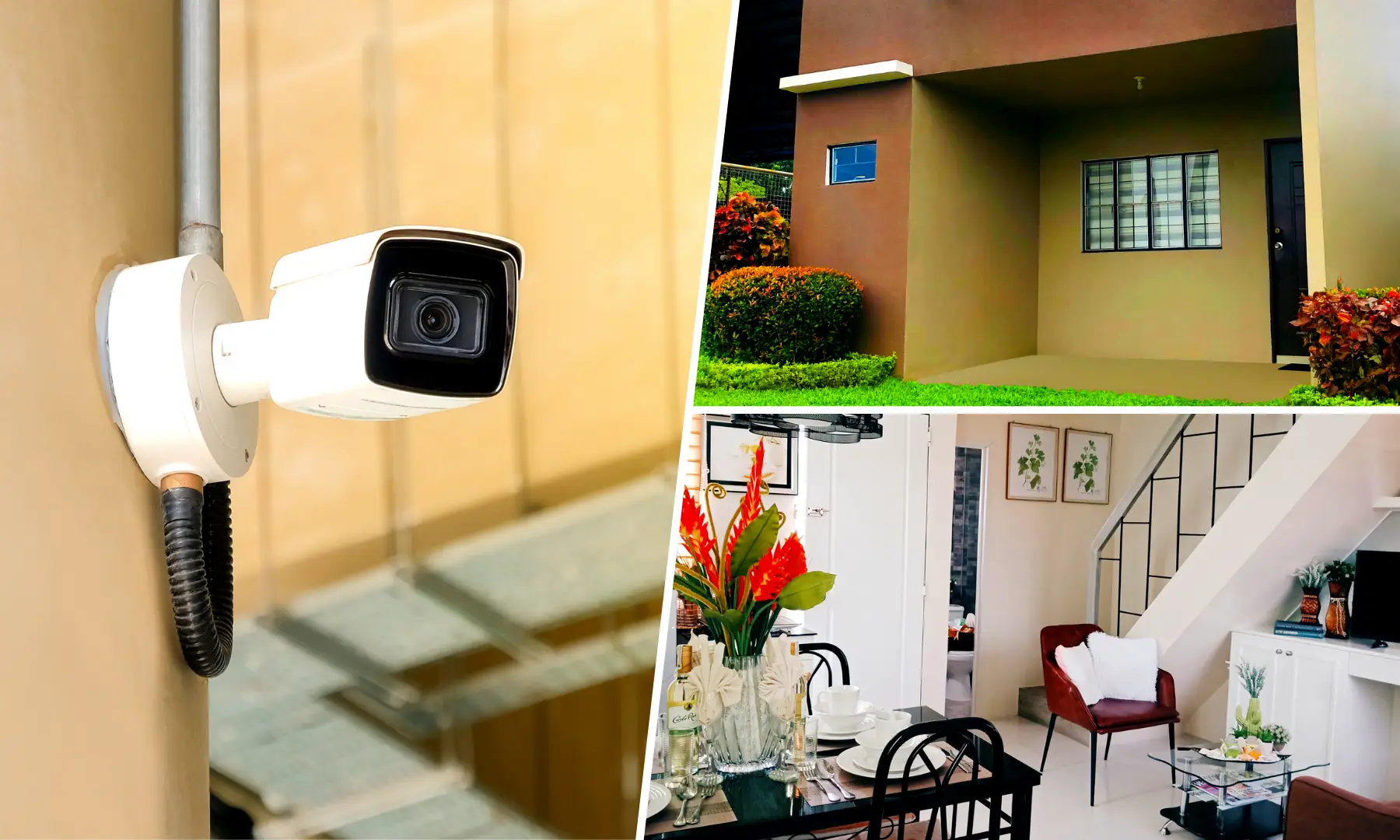Home>Home Security and Surveillance>What Are Security Cameras
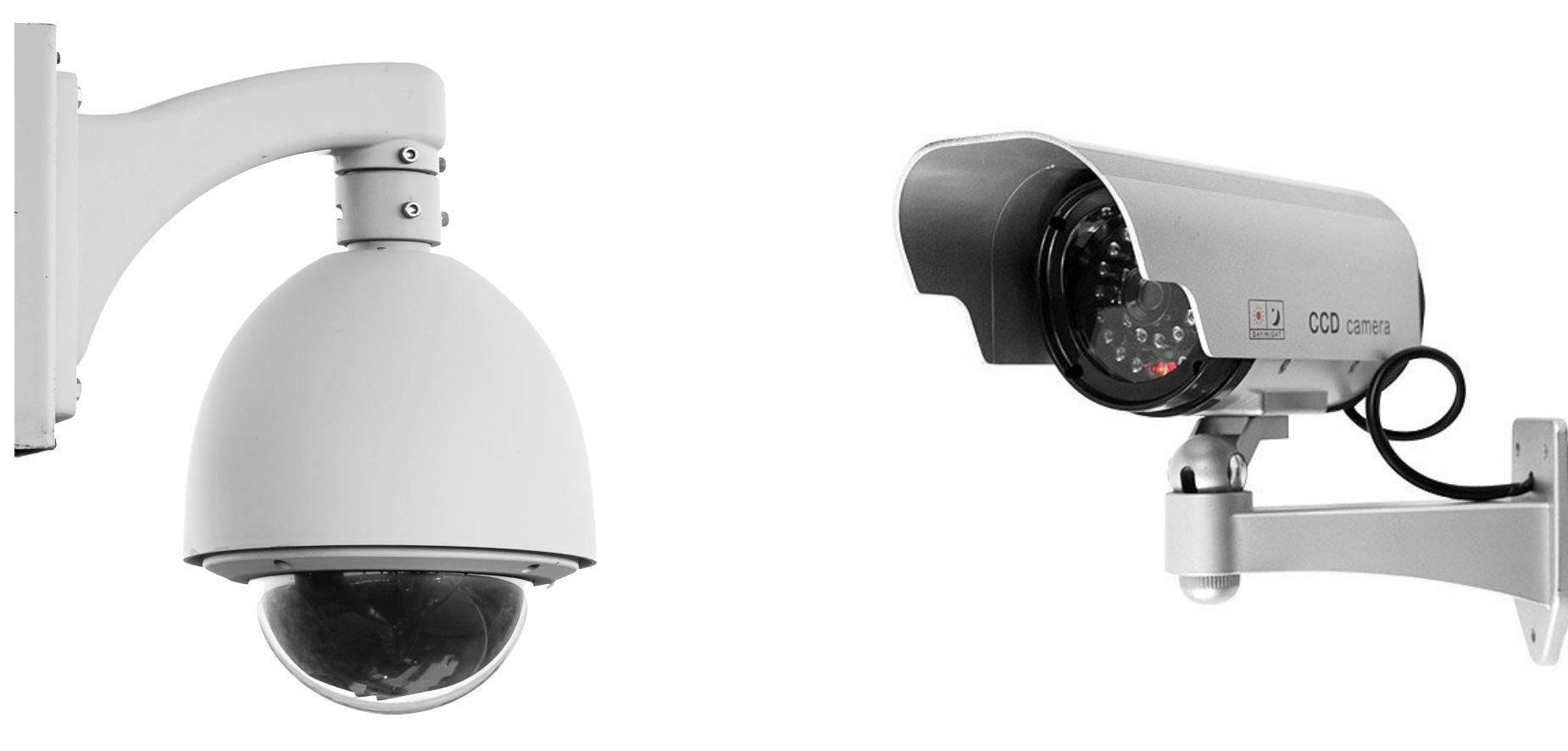

Home Security and Surveillance
What Are Security Cameras
Modified: March 6, 2024
Enhance your home security and surveillance with our top-quality security cameras. Discover the peace of mind that comes with advanced monitoring and protection.
(Many of the links in this article redirect to a specific reviewed product. Your purchase of these products through affiliate links helps to generate commission for Storables.com, at no extra cost. Learn more)
Introduction
Welcome to the world of home security and surveillance! In today’s rapidly changing world, it’s more important than ever to ensure the safety and protection of our homes and loved ones. This is where security cameras come into play. These devices have revolutionized the way we monitor and secure our homes, providing us with valuable peace of mind.
In this comprehensive guide, we will explore the fascinating world of security cameras. From their history and types to their components and installation best practices, we will cover everything you need to know to make informed decisions about home security.
Security cameras have come a long way since their inception, and understanding their evolution will give us deeper insights into their capabilities and benefits. We will delve into the history of security cameras, tracing their roots back to the early days of closed-circuit television (CCTV) systems. Through advancements in technology and the integration of artificial intelligence, security cameras have become more powerful and versatile than ever before.
Next, we will explore the various types of security cameras available in the market. From traditional analog cameras to high-definition IP cameras, each type has its own set of features and advantages. Understanding the differences between these cameras will help you choose the one that best suits your specific needs and budget.
Key Takeaways:
- Security cameras have evolved from basic CCTV systems to advanced AI-powered devices, offering remote access, night vision, and real-time analytics for enhanced home security and peace of mind.
- When installing security cameras, consider factors like camera type, image quality, and legal regulations. Follow best practices for optimal placement and maintenance to maximize the benefits of surveillance.
Read more: What Is Security Camera
History of Security Cameras
The evolution of security cameras can be traced back to the 1940s when the first closed-circuit television (CCTV) system was invented. These early systems were primarily used for military and government purposes, with limited applications in public spaces.
It wasn’t until the 1960s that security cameras started to become more prevalent in commercial and residential settings. The introduction of VCR technology allowed for the recording and playback of surveillance footage, making it easier to monitor and analyze events.
Throughout the years, advancements in technology paved the way for significant improvements in security camera systems. The 1980s marked the transition from analog to digital cameras, offering higher image quality and better storage capabilities. The 1990s saw the rise of IP cameras, which enabled easy integration with computer networks and remote monitoring.
Fast-forward to the present day, security cameras have become an essential component of home security systems. The advent of high-definition (HD) and ultra-high-definition (UHD) cameras has revolutionized video surveillance, providing crystal-clear images and better identification of individuals.
Furthermore, the integration of artificial intelligence (AI) and machine learning algorithms has taken security cameras to new heights. These advanced systems can now analyze video feeds in real-time, automatically detect suspicious activities, and even recognize faces or license plates.
The continuous advancements in connectivity and the rise of the Internet of Things (IoT) have also contributed to the growth of “smart” security cameras. These cameras can be easily controlled and accessed through smartphones or other smart devices, allowing homeowners to monitor their properties from anywhere at any time.
Overall, the history of security cameras showcases the incredible progress made in the field of surveillance technology. From simple CCTV systems to sophisticated AI-powered cameras, these devices have become an indispensable tool for protecting our homes and ensuring our peace of mind.
Types of Security Cameras
When it comes to security cameras, there is a wide range of options available. Each type of camera has its own unique features and benefits, catering to different surveillance needs. Let’s explore some of the most common types of security cameras:
- Indoor cameras: As the name suggests, indoor cameras are designed for indoor use. They are typically smaller in size and discreet, making them ideal for monitoring the inside of your home. Indoor cameras are commonly used to keep an eye on specific areas such as living rooms, bedrooms, or nurseries.
- Outdoor cameras: Outdoor cameras are specifically designed to withstand the elements and provide surveillance coverage for the exterior of your home. They are built with weatherproof housing to protect against rain, dust, and harsh temperatures. Outdoor cameras are ideal for monitoring entrances, driveways, and backyard areas.
- Wireless cameras: Wireless cameras offer the convenience of easy installation and flexibility in camera placement. They utilize Wi-Fi technology to connect to your home network, eliminating the need for messy wiring. Wireless cameras can be placed anywhere within range of the Wi-Fi signal and are often chosen for their simplicity and versatility.
- Wired cameras: Wired cameras, on the other hand, require a physical connection to a power source and a network/video recorder. While they may be more challenging to install due to wiring requirements, wired cameras provide a stable and reliable connection. They are commonly used in larger surveillance systems where multiple cameras are installed.
- PTZ cameras: PTZ stands for pan, tilt, and zoom. These cameras offer the ability to rotate horizontally (pan), vertically (tilt), and zoom in or out. PTZ cameras are often used in larger areas where the operator needs to actively monitor and track specific targets or areas of interest. They can be controlled manually or set to an automated patrolling mode.
- IP cameras: IP cameras, also known as network cameras, transmit video footage over an internet protocol (IP) network. They offer high-definition video quality and advanced features such as remote access, motion detection, and night vision. IP cameras can be wired or wireless and are compatible with various network video recorders (NVRs) for storage and playback.
- Dome cameras: Dome cameras are named after their dome-shaped housing. They are commonly used in both indoor and outdoor settings and are known for their discreet and unobtrusive design. The dome housing also offers a level of protection against vandalism as it is difficult to determine where the camera is pointing.
- Bullet cameras: Bullet cameras are cylindrical in shape and are often used for long-range viewing. They are typically larger and more visible compared to dome cameras, making them a deterrent for potential intruders. Bullet cameras are popular for monitoring large outdoor areas such as parking lots or open yards.
These are just a few examples of the types of security cameras available in the market. Each type has its own advantages and limitations, so it’s important to consider your specific surveillance needs and the environment in which the camera will be installed.
Components of Security Cameras
Security cameras are complex devices that consist of various components working together to capture and transmit video footage. Understanding these components will allow you to make informed decisions when selecting a camera for your home security system. Let’s take a closer look at the key components of security cameras:
- Lens: The lens is the part of the camera responsible for capturing and focusing light onto the image sensor. It determines the field of view and the amount of detail that can be captured. Security cameras may have fixed lenses or adjustable lenses for zooming and focusing.
- Image Sensor: The image sensor converts the incoming light into an electrical signal, which is then processed to form the final video image. Common types of image sensors used in security cameras are CMOS (Complementary Metal-Oxide-Semiconductor) and CCD (Charge-Coupled Device).
- Processor: The processor handles the image processing tasks, such as adjusting exposure, white balance, and noise reduction. It plays a crucial role in determining the overall image quality of the camera.
- IR Illuminators: Many security cameras are equipped with infrared (IR) illuminators, which emit infrared light that is invisible to the human eye. IR illuminators enable the camera to capture clear video footage in low-light or complete darkness, making them essential for night vision capabilities.
- Enclosure: The enclosure refers to the housing or casing that protects the internal components of the camera from environmental factors such as dust, moisture, and vandalism. It also determines the camera’s level of weather resistance, making it suitable for indoor or outdoor use.
- Mounting Bracket: The mounting bracket allows the camera to be securely attached to a wall, ceiling, or any desired surface. It provides flexibility in positioning the camera to achieve the desired viewing angle and coverage area.
- Power Supply: Security cameras require a power source to operate. Some cameras are powered by batteries, while others are connected to an electrical outlet or a power over Ethernet (PoE) switch.
- Network Connectivity: IP cameras, in particular, have network connectivity capabilities, allowing them to connect to your home network or the internet. This enables remote monitoring and access to the camera’s live feed and recorded footage.
- Recording and Storage: To store and manage the video footage captured by the camera, a recording and storage solution is required. This can be a network video recorder (NVR) for IP cameras or a digital video recorder (DVR) for analog cameras.
- User Interface: Lastly, the user interface refers to the software or interface through which users interact with the camera. This can be a mobile app, a web-based interface, or dedicated software provided by the camera manufacturer.
These components work together seamlessly to capture, process, and store video footage, providing you with reliable surveillance and peace of mind. By understanding these components, you can make informed choices when selecting the right security camera for your home.
Factors to Consider when Choosing Security Cameras
Choosing the right security cameras for your home can be a daunting task with the multitude of options available. To ensure that you make the best decision, it’s important to consider various factors that will impact the effectiveness and suitability of the cameras for your specific needs. Here are some key factors to consider:
- Location: Determine the areas of your home that require surveillance. Assess whether you need cameras for indoor or outdoor monitoring. Consider the size of the area and the level of coverage required to ensure all critical areas are adequately monitored.
- Camera Type: Choose the appropriate camera type based on your needs. Consider factors such as whether you require fixed or adjustable lenses, a wide field of view, or specific features such as pan, tilt, and zoom capabilities.
- Image Quality: The image quality is crucial for clear and detailed video footage. Consider the resolution and image sensor type of the cameras. High-definition (HD) or ultra-high-definition (UHD) cameras will provide better image clarity and enable better identification of individuals or objects.
- Low-Light Performance: If you require surveillance in low-light conditions or at night, consider cameras with strong low-light performance. Look for cameras with infrared (IR) illuminators for effective night vision capabilities.
- Camera Connectivity: Decide whether you want wired or wireless cameras. Wired cameras provide a stable connection but require installation with cables. Wireless cameras offer flexibility in positioning, but their performance may be affected by obstacles and signal interference.
- Storage and Recording: Determine your storage and recording needs. Consider whether you prefer local storage with a built-in SD card slot or cloud storage options provided by the camera manufacturer or third-party services. Also, choose a recording solution that suits your needs, such as an NVR for IP cameras or a DVR for analog cameras.
- Budget: Set a budget for your security camera system. Keep in mind that higher-quality cameras with advanced features will generally come at a higher cost. Consider the value and long-term benefits when deciding on a budget.
- Compatibility: Ensure that the security cameras you choose are compatible with your existing home security system or any future expansions you may consider. Check if the cameras can integrate with other devices or security software for seamless operation.
- User-Friendly Interface: Consider the ease of use and the user interface of the camera system. Look for cameras that offer intuitive mobile apps or web-based interfaces that allow you to access and control the cameras with ease.
- Protection and Durability: Assess the durability and protection features of the cameras. For outdoor cameras, look for weather-proof and vandal-proof enclosures to withstand harsh conditions and deter tampering or damage.
By carefully considering these factors, you can make a well-informed decision when selecting security cameras for your home. Remember to prioritize your specific surveillance needs and choose cameras that offer the features and capabilities necessary to provide the level of security you desire.
Read more: What Is A Ring Security Camera
Benefits of Security Cameras
Security cameras have become an essential tool in home security systems, offering numerous benefits for homeowners. Investing in a reliable surveillance system can provide you with peace of mind and enhance the overall safety and security of your home. Let’s explore some of the key benefits of security cameras:
- Deterrence of Criminal Activity: One of the most significant benefits of security cameras is their deterrence effect on criminal activity. Visible cameras act as a deterrent, dissuading potential burglars or intruders from targeting your home. The presence of security cameras alone can significantly reduce the risk of a break-in or vandalism.
- Monitoring and Surveillance: Security cameras allow you to monitor and keep a watchful eye on your property, even when you are away. With remote access capabilities, you can view live feeds and recorded footage from your cameras through smartphones, tablets, or computers. This provides you with valuable peace of mind and the ability to respond promptly to any suspicious activities.
- Evidence Collection: In the unfortunate event of a crime or suspicious incident, security cameras provide valuable evidence for law enforcement and insurance claims. High-quality video footage can serve as crucial evidence for identifying suspects, documenting events, and supporting legal proceedings.
- Emergency Response: Security cameras can assist in emergency situations by providing real-time information to emergency services. For example, in the event of a fire or medical emergency, the live feed from the cameras can help first responders assess the situation and take appropriate action more effectively.
- Remote Monitoring: With the convenience of remote access, you can monitor your home from anywhere at any time. Whether you’re at work, on vacation, or running errands, you can check in on your cameras to ensure that everything is secure and in order. This feature is particularly valuable for frequent travelers or homeowners with second homes.
- Child and Elderly Monitoring: Security cameras provide an added layer of protection by allowing you to monitor your children or elderly family members. You can remotely monitor their activities or check in on their well-being, ensuring their safety and providing peace of mind.
- Insurance Benefits: Security cameras can have a positive impact on your home insurance premiums. Many insurance companies offer discounts or incentives for homeowners who have security camera systems installed. By demonstrating that your home is equipped with surveillance, you can potentially reduce your insurance costs.
- Peace of Mind: Having security cameras installed in your home grants you peace of mind like no other. Whether you are inside your home or away, you can rest assured that your property and loved ones are protected. The knowledge that you have taken proactive measures to enhance security brings invaluable peace of mind to homeowners.
These are just a few of the many benefits that security cameras offer. With advancements in technology and the integration of smart features, security cameras have become an essential component of any comprehensive home security system.
When installing security cameras, make sure to place them in areas with good lighting and minimal obstructions for the best visibility.
Limitations of Security Cameras
While security cameras offer a wide range of benefits, it’s important to also consider their limitations. Understanding these limitations will help you have realistic expectations and make informed decisions when it comes to home security. Here are some key limitations of security cameras:
- Blind Spots: Security cameras have specific viewing angles and coverage areas. Depending on the positioning and placement of the cameras, there may be blind spots or areas that are not fully within the camera’s field of view. Thoroughly planning camera placement and considering the coverage area is essential to minimize blind spots.
- Reliance on Lighting Conditions: The performance of security cameras can be influenced by lighting conditions. Cameras may struggle to capture clear footage in low-light environments or during nighttime. While many cameras are equipped with infrared (IR) illuminators for night vision, extreme darkness or obstructions can still impact the clarity of the footage.
- Privacy Concerns: Security cameras must be used responsibly and with consideration for privacy concerns. Cameras should not invade the privacy of neighbors or public spaces. It’s important to be aware of legal regulations regarding the placement and recording capabilities of security cameras in your area.
- Data Storage and Bandwidth: High-resolution cameras can generate significant amounts of data, requiring ample storage capacity. The size of the recorded footage, especially with continuous recording, can quickly consume storage space. Additionally, streaming high-definition video feeds remotely might require a robust internet connection with sufficient bandwidth to ensure smooth and uninterrupted access.
- Maintenance and Upkeep: Security cameras require regular maintenance to ensure optimal performance. This includes cleaning lenses, checking connections, and replacing any faulty components. Additionally, firmware updates and software patches may need to be applied periodically to address security vulnerabilities and enhance functionality.
- System Vulnerabilities: Like any technology, security cameras are not immune to potential vulnerabilities. It’s essential to secure your camera system against hacking attempts. This can involve implementing strong passwords, keeping camera firmware up to date, and utilizing secure network connections.
- Cost and Complexity: Installing a comprehensive security camera system can be costly, especially when considering high-quality cameras with advanced features. The complexity of installation, wiring, and network setup may also require professional assistance, adding to the overall cost. Ongoing costs, such as storage subscriptions and equipment maintenance, should be factored in as well.
- Limitations of Personal Monitoring: While remote access allows homeowners to monitor their cameras from anywhere, personal monitoring has its limitations. It may not be feasible to constantly monitor cameras in real-time, and relying solely on personal monitoring may result in missed events or delays in responding to incidents.
These limitations should not discourage you from considering security cameras for your home. Instead, they serve as important considerations to manage expectations and ensure that you choose the right security solution that aligns with your needs and priorities.
Best Practices for Installing Security Cameras
Installing security cameras in your home is an effective way to enhance your overall security and provide peace of mind. To maximize the benefits of your surveillance system, it’s important to follow best practices during the installation process. Here are some key tips to consider:
- Assess Your Home’s Vulnerabilities: Before installing security cameras, conduct a thorough assessment of your home’s vulnerabilities. Identify the areas that require monitoring, such as entrances, windows, or blind spots. This will help you determine the most strategic locations for camera placement.
- Choose the Right Camera Locations: Position cameras at locations that provide optimal coverage of the areas you want to monitor. Consider installing cameras at eye level to capture facial details and make identification easier. Also, ensure that the cameras are mounted securely, out of reach from potential tampering or vandalism.
- Consider Lighting Conditions: Take into account the lighting conditions in the areas where you plan to install cameras. For areas with low-light conditions or nighttime surveillance, consider cameras with infrared (IR) illuminators or external lighting options to ensure clear video footage. Avoid placing cameras directly facing strong light sources that can wash out the image quality.
- Secure Wiring and Power Connections: If you choose wired cameras, properly secure the wiring to prevent tampering or accidental disconnection. Conceal the wiring as much as possible to maintain a clean and professional installation. Use weatherproof boxes or conduit for outdoor wiring to protect against environmental elements.
- Configure Camera Settings: Once cameras are installed, configure their settings according to your needs. Adjust the field of view, image quality, motion detection sensitivity, and recording preferences. Ensure that cameras are set to record and store footage based on your desired schedule and storage capacity.
- Ensure Internet Connectivity: If you have IP cameras or cameras with remote access capabilities, ensure that your home network has a stable internet connection. Position cameras within range of your Wi-Fi signal or use Wi-Fi extenders if needed. Test the remote access functionality to ensure you can view live feeds and recorded footage from your cameras on your mobile devices or computers.
- Secure Your Camera System: Take steps to secure your camera system to protect against hacking or unauthorized access. Change default passwords on cameras and network devices, use strong, unique passwords, and enable two-factor authentication when available. Keep camera firmware and software up to date to address security vulnerabilities.
- Educate Household Members: Ensure that all household members are aware of the presence of security cameras and understand their purpose. Educate them on how to access and use the camera system responsibly. Discuss privacy considerations and ensure that everyone respects the privacy of others.
- Maintain and Test: Regularly maintain your security camera system by cleaning lenses, checking connections, and replacing any faulty components. Perform periodic tests to verify camera functions, network connectivity, and recording capabilities. Update firmware and software as necessary to ensure optimal performance and security.
- Review Local Regulations: Familiarize yourself with any local regulations or legal considerations regarding the use of security cameras in your area. Understand your rights and responsibilities as a homeowner and ensure that your camera system complies with all applicable laws and regulations.
By following these best practices, you can ensure that your security camera system is properly installed and optimized for effective surveillance. Always prioritize the safety and security of your home while respecting the privacy of others.
Legal Considerations for Security Cameras
When installing security cameras in your home, it’s important to be aware of and comply with the legal considerations and regulations surrounding their use. Understanding the legal aspects will help ensure that you protect your privacy, respect the rights of others, and use your security cameras responsibly. Here are some key legal considerations to keep in mind:
- Privacy Laws: Familiarize yourself with the privacy laws in your jurisdiction that regulate the use of surveillance cameras. These laws vary from country to country and may also vary on a local or state level. Understand the legal limits on where you can position cameras and what areas you can monitor, especially when it comes to public spaces or areas where privacy is expected.
- Consent and Notice: In some jurisdictions, you may be required to obtain consent from individuals before recording them on your security cameras, even if they are on your private property. Posting clear and visible signs that indicate the presence of surveillance cameras can help provide notice to individuals entering your premises.
- Audio Recording Laws: In addition to video surveillance, if your security cameras have audio recording capabilities, be aware of the applicable laws governing the recording of audio. In many jurisdictions, it is prohibited to record audio without the consent of the parties involved, and laws regarding audio recording can be stricter than those regarding video recording.
- Public vs. Private Property: Understand the distinction between public and private property when it comes to the installation and use of security cameras. Generally, you have more leeway in monitoring and recording activities on your private property compared to public areas.
- Retention and Access to Footage: Determine how long to retain recorded footage according to local regulations and your specific needs. Additionally, be mindful of who has access to the footage and take appropriate measures to protect it from unauthorized access or disclosure.
- Neighborly Considerations: Be considerate of your neighbors’ privacy. Position your cameras in a way that does not invade their privacy or record activities in their property. Respect their rights and have open communication if any concerns arise.
- Professional Installation: If you are unsure about the legal regulations or complexities surrounding security cameras, consider seeking advice from a professional installer or consulting local authorities to ensure compliance with applicable laws.
- Data Protection and Cybersecurity: Safeguard the recorded footage by implementing strong passwords on your camera systems and network devices. Regularly update firmware and software to address security vulnerabilities, and utilize encryption technologies to protect the privacy of the recorded data.
- Insurance and Legal Liability: Consult with your insurance provider to understand any requirements or benefits associated with installing security cameras. Additionally, consider the potential legal liability that may arise from the use of security cameras, such as privacy breaches or unintended consequences. Review your insurance and liability coverage accordingly.
- Documentation: Keep records of the camera locations, notice signage, and any consents obtained if required by law. Maintain documentation of any changes made to the camera system, including firmware updates or modifications to the recording settings.
It is important to remember that laws and regulations regarding security cameras can differ depending on your location. Therefore, it is essential to consult and familiarize yourself with the specific laws in your jurisdiction to ensure compliance and responsible use of security cameras.
Read more: What Is A Dome Security Camera
Future of Security Cameras
The realm of security cameras continues to evolve rapidly, driven by advancements in technology and the increasing demand for innovative security solutions. As we look to the future, several exciting developments and trends are shaping the landscape of security camera technology. Here are some key aspects that highlight the future of security cameras:
- Higher Resolution and Image Quality: The pursuit of clearer and more detailed video footage remains a top priority. We can expect security cameras to continue advancing in resolution, with 4K and even 8K cameras becoming more prevalent. High-quality image sensors and advanced image processing technologies will further enhance the clarity and richness of the captured footage.
- Artificial Intelligence and Machine Learning: The integration of artificial intelligence (AI) and machine learning (ML) algorithms is revolutionizing security cameras. AI-powered cameras can now analyze video feeds in real-time, automatically detect and classify objects and people, and even recognize faces or license plates. These capabilities will greatly enhance the accuracy of monitoring and improve the effectiveness of alert systems.
- Smart and Connected Systems: Security cameras are becoming an integral part of smart home systems. Integration with voice assistants, smart speakers, and other IoT devices enables seamless control and monitoring of cameras through a unified interface. The ability to synchronize cameras with other sensors and devices will enhance automation and customized security protocols.
- Cloud-Based Storage and Analytics: Cloud storage solutions are gaining traction, allowing for easy remote access, storage, and retrieval of recorded footage. Cloud-based analytics will enable more advanced data processing and real-time monitoring, enhancing the capabilities of security cameras to detect anomalies, identify patterns, and provide valuable insights.
- Improved Low-Light Performance: As night vision technology continues to improve, security cameras will offer even better performance in low-light conditions. Enhanced sensitivity, innovative IR illuminators, and advanced noise reduction algorithms will result in clearer and more detailed video footage in challenging lighting environments.
- Edge Computing: With the rise of edge computing, security cameras are increasingly equipped with onboard processing capabilities. This allows for faster analysis of video data and reduces reliance on cloud resources. Edge analytics will enable real-time response and decision-making, enhancing security and reducing the need for constant streaming and cloud bandwidth.
- Enhanced Facial Recognition: Facial recognition technology will continue to advance, enabling more accurate identification of individuals. This can be beneficial for both security and convenience purposes, such as access control or personalized automation within smart home systems. However, ethical considerations and privacy concerns surrounding facial recognition will also be important topics of discussion.
- Drone Integration: In the future, we may see increased integration of security cameras with drones for aerial surveillance. Drones equipped with cameras can provide a bird’s-eye view of large areas or areas that are challenging to monitor using traditional cameras. However, regulations regarding drone usage and privacy concerns will need to be addressed.
- Data Security and Privacy: As security cameras become more advanced and interconnected, ensuring data security and protecting privacy will be paramount. Stricter regulations, encryption techniques, and robust authentication protocols will help safeguard the collected data and prevent unauthorized access or misuse.
- Environmental Considerations: The future of security cameras will also embrace eco-friendly and sustainable practices. Energy-efficient designs, the use of recyclable materials, and reduced environmental impact will be key considerations in the development and manufacturing of security camera systems.
The future of security cameras is promising, with ongoing advancements propelling the industry forward. These developments will enhance the effectiveness, convenience, and intelligence of security camera systems, providing homeowners with even greater peace of mind and comprehensive protection for their properties.
Conclusion
Security cameras have become an essential component of modern home security systems, providing homeowners with an unparalleled level of peace of mind and protection. As we’ve explored in this comprehensive guide, the history, types, components, and benefits of security cameras have evolved significantly over time.
From their humble beginnings as closed-circuit television (CCTV) systems to the current era of high-definition IP cameras and AI-powered surveillance solutions, security cameras have transformed the way we monitor and secure our homes. They offer advanced features such as remote access, motion detection, night vision, and real-time analytics, enabling homeowners to have greater control and peace of mind over their property.
However, it’s crucial to also consider the limitations and legal considerations associated with security cameras. Understanding these factors ensures responsible and compliant use of surveillance technology, respecting the privacy of others and adhering to local regulations.
The future of security cameras is promising, with ongoing advancements in areas such as image quality, AI integration, cloud storage, and facial recognition. These innovations will continue to enhance the effectiveness, convenience, and intelligence of security camera systems, allowing homeowners to maintain a heightened sense of security and vigilance.
As you embark on your journey of selecting and installing security cameras, remember the best practices discussed in this guide. Thoroughly assess your home’s vulnerabilities, choose the right camera type and locations, and secure your camera system against potential threats. Regular maintenance and updates will ensure optimal performance and longevity.
Ultimately, the investment in security cameras is an investment in the safety and security of your home and loved ones. With the right security camera system in place, you can rest assured that your property is protected, whether you’re at home or away.
Remember, the world of security cameras is constantly evolving, so stay informed about new technologies and industry trends. By staying ahead of the curve, you can continue to enhance your home security and adapt to emerging challenges and opportunities in the ever-changing landscape of home surveillance.
Frequently Asked Questions about What Are Security Cameras
Was this page helpful?
At Storables.com, we guarantee accurate and reliable information. Our content, validated by Expert Board Contributors, is crafted following stringent Editorial Policies. We're committed to providing you with well-researched, expert-backed insights for all your informational needs.
